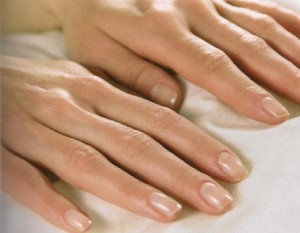
More evidence that low-calorie sweeteners are bad for your health
Studies show that artificial sweeteners can raise the risk of hypertension, metabolic syndrome, type 2 diabetes and heart disease, including stroke.

Your nails play an important role, serving to protect your fingers and improve dexterity.
Healthy fingernails are generally smooth, and uniform in colour. They should be free of spots, ridges, dents or discoloration. If your nails don’t look so great it could just be because of lack of regular care and attention, but it could also be an indication of an underlying condition – such as a fungal infection – that requires attention.
Nails are composed of laminated layers of a protein called keratin, which is also found in your hair and skin. They grow from the area under the cuticle (matrix). As the new cells grow, older cells become hard and compacted and are eventually pushed out toward your fingertips.
Each nail comprises several parts:
Nail plate – the hard, most visible part of your nail.
Nail folds – the skin that frames each nail plate on three sides.
Nail bed – the skin beneath the nail plate. Cells at the base of your nail bed produce the fingernail or toenail plate.
Lunula – the whitish, half-moon shape at the base of your nail underneath the plate.
Nails grow at a rate of about 0.1 mm a day, so it takes a fingernail about four to six months for it to regenerate fully.
Taking care of your nails
Nails need moisture just like your skin does. Rub lotion or healthy essential and healthy oils into your nails when moisturising your hands. Be sure to apply a moisturiser each time you wash your hands.
Massaging moisturiser into the nails and cuticles encourages healthy circulation, which means that oxygenated blood, full of nutrients reaches the hair and nails.
Remember also to protect hands and nails by wearing rubber gloves whenever you do the dishes or are doing cleaning work that brings your hands into contact with water and harsh detergents for prolonged periods of time. Wear protective gloves when gardening and doing household chores as well.
In addition:
Never pull off hangnails; doing so almost always results in ripping living tissue. Instead clip hangnails off, leaving a slight angle outward.
A healthy diet
Your diet will have an influence on the health of your skin and nails. Increase your intake of EFAs which nourish your nails, EFA oils can also be used on your nails.
Take a good multivitamin and mineral tablet – minor or trace efficiencies are often at the root of nail problems
For healthy nails eat high quality protein foods such as legumes, nuts, and seeds. Eat foods that are high in B vitamins or take a supplement.
Also remember to drink plenty of water since a hydrated body encourages healthy hair and nails.
A natural manicure
When grooming your nails keep them nails short, square shaped and slightly rounded on top.
If your nails are very brittle try trimming them after a bath or a 15-minute hand-soak in a warm oil such as evening primrose, olive or avocado, then apply a moisturiser.
Several times a week, moisturise your nails and cuticles at bedtime with a warm oil, such as wheatgerm or avocado, then wear cotton gloves to encourage the absorption of moisture and nutrients from the oil.
If you use a nail hardener, try to avoid products which contain toluene sulphonamide or formaldehyde, as they are toxic and can cause irritation.
Most nail polish contains highly toxic chemical ingredients, so use only occasionally and sparingly. Avoid removers that use acetone, which dries nails and cuticles.
Make it yourself
You can create your own using a healthy nail oil, such as olive oil, and adding essential oils. Lavender and myrrh are good choices, to encourage circulation and promote healing. If you have hangnails or any areas of redness, use tea tree oil to fight infection. See also our recipes below for a luxurious natural hand and nail care.
Cuticle cream
This nourishing cream will soften cuticles and discourage hangnails.
Mix into a paste and put into a sterile ointment jar or small pot. Massage into nails and cuticles.
Honey hand exfoliator
Stimulate the circulation in your hands, remove dead skin cells and nourish your skin and nails with this delicious home-made exfoliator.
Combine ingredients in a small jar, apply to hands or feet and rub gently. For added softness, leave on for 5-10 minutes. Rinse and gently pat dry.

Please subscribe me to your newsletter mailing list. I have read the
privacy statement